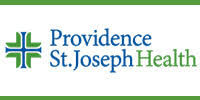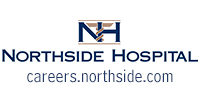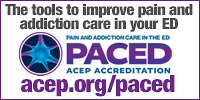- November 15,2019 | ISSN 1940-6967
- The National Association Of Medical Doctors
Featured Sponsors
It's Time to Nix Medicine's Most Mundane Tasks
By Fred N. Pelzman, MD
Across the length and breadth of healthcare, every member of every team seems to be overwhelmed and bordering on burnout due to an overwhelming number of tasks that are all too often exceedingly below their levels of expertise.
The mundane tasks of medicine have overtaken, in terms of their time, effort and energy, the things about this life/career/job that we chose it for in the first place.
Signing homecare forms. Faxing durable medical equipment orders. Obtaining prior authorization for imaging studies. Obtaining prior authorization for medications. Sitting on the phone for peer review for imaging studies we need done. Checking boxes of tongue depressors for their expiration dates.
An endless stream of clicking boxes, busywork, meaningless minutia that somebody else thought was a really good idea to improve the quality of care we provide.
Clearly, we can't be administering expired medications to our patients. We can't obstruct fire doors with heavy equipment, nor pile supply boxes up to the ceiling so they obstruct potentially life-saving sprinklers.
An incredible number of quality improvement and patient safety measures have been created over the years that really do good, such as repetitive checking to make sure no metal is entering an MRI suite, or that the right medication is being given to the right patient at the right time.
And we don't want to go back to the old days where we thought we were doing the right thing, but far too often the wrong limb got amputated or the wrong patient got somebody else's treatment.
But the incredible noise we've created around healthcare, the endless shower of stuff that needs to get done that isn't really medical, isn't really healthcare, isn't what we were trained to do, and in the opinion of many folks doing the work, creates an environment where medical errors and potential harm might actually be more likely.
All of these tasks have created an adversarial environment in healthcare, where patients are demanding forms be completed, pharmacists are yelling at doctors, nurses are getting yelled at by patients, families are frustrated, patients are frustrated, and nobody's getting the healthcare they need.
What we need is more intelligent design -- systems better engineered to accomplish what we need them to do, without creating a lot of flotsam and jetsam that just gets in the way.
Several innovative tools are about to be rolled out in our electronic health record that actually seem to hold promise towards helping us move in this direction.
All day long, we write prescriptions for medications that get electronically prescribed to the pharmacy, and only later when the patient tries to pick them up is it discovered that this one is not on the formulary for their insurance plan, which leads to a bunch of calls back to the practice and an enormous amount of wasted time and energy.
A new system has been put in place that, at the time of prescribing, checks against the patient's insurance plan's formulary and informs the provider right away whether it is covered, whether there are covered alternatives that may be satisfactory, and, if the provider insists on proceeding, automatically prompts the necessary questions to get the medication approved.
While still cumbersome, with lots and lots of clicking, it seems that doing this work upfront may actually improve things, and in fact could lead to more doctors simply choosing a medicine that is covered by the patient's insurance, rather than something that isn't and requires more work downstream.
I have several friends in private practice who say they just don't do prior authorizations for medications. If someone has a medical condition that requires a medicine, and there is a reasonable alternative to treat it that is covered by their insurance, then that's the medicine the patient gets.
Sure, there certainly are situations where we want to put forth an argument that medicine A is in fact better than medicine B, due to drug-drug interactions, prior adverse reactions to something in one particular formulation, or a medicine where variations between the different versions affects bioavailability. But almost always there is another version of the medicine in question that should do the job.
If a patient's insurance company has decided (whether we think that's right or not) that this is the medicine they pay for, then that pretty much should be what the patient should be able to get.
I remember several months ago I was called to see a patient who had come into our waiting room, demanding that she needed all of her prescriptions changed to DAW, dispense as written.
She insisted that she must have the brand-name drugs for all of her medicines, and as much as I tried to tell her that her insurance company would only pay for the generics, she insisted that we make these changes and call her insurance company and get them to agree.
Finally, she told me why this had to happen: she told me she was allergic to the ingredient "generic."
Some things will never change.
Another task that plagues us through the day is getting our patients the durable medical equipment, testing supplies, and other non-pharmaceutical things they need to help further their health.
The process has always been laborious, requiring printing a hard copy on prescription paper and faxing it to a supplier. (Why in the 21st century, when I can electronically prescribe every medicine ever made, opiates, benzodiazepines, all manner of sleeping pills, can I not send incontinence pads, rubber gloves, or insulin syringes through the same system?)
This new system created by our EHR vendor takes the prescriber through the process of selecting a particular product, giving the medical reasons why it's needed, answering all the necessary questions to get it approved, and then zipping it off electronically to the supply companies, for prompt delivery to a patient's home.
Much better than signing a prescription, printing it out, putting it in the DME nursing task pile, having it faxed, getting a fax back, filling out another form, calling the vendor, leaving a message, pulling your hair out.
Perhaps if the electronic health record is really going to help us take care of our patients, there can be more and more things like these developed, building systems that help us, rather than wear us down.
I can only hope that the people designing these workflow systems come to those of us who do this day-to-day, and enlist our help in selecting the things, the pain points, the tasks that do nothing more than slow us down and interfere with the care of our patients.
Someday, homecare forms will be filled in automatically and filed with the appropriate diagnosis codes; the visiting nurse agencies will remember my UPIN number and NPI number from month to month; a patient's medical history will be available to all who need to know it; school forms and work forms will be standardized so that appropriate testing happens automatically and the forms get processed and completed with very little input from a doctor or nurse practitioner unless it's really needed.
There are potentially hundreds of places where artificial intelligence and machine learning can help us build a better healthcare system, to alleviate all of this oppressive stuff that is making the practice of medicine more unpleasant than it really ought to be.
So do me a favor.
If there's something that you do, over and over every day, that drives you up the wall, that you'd really like to see automated, streamlined, built into the EHR, outsourced away from doctors and nurse practitioners and nurses, please let me know.
Reply to this column with a comment. We all know the things that drive us crazy and make our brains buzz. Tell me your pet peeves, and maybe we can get some traction on moving more of these ideas forward.
Looking forward.
Articles in this issue:
Top Physician Opportunities
Journal of Medicine Sign Up
Get the Journal of Medicine delivered to your inbox.
In This Issue
Archives
Masthead
-
- Editor-in Chief:
- Theodore Massey
- Editor:
- Robert Sokonow
- Editorial Staff:
- Musaba Dekau
Lin Takahashi
Thomas Levine
Cynthia Casteneda Avina
Ronald Harvinger
Lisa Andonis
Leave a Comment
Please keep in mind that all comments are moderated. Please do not use a spam keyword or a domain as your name, or else it will be deleted. Let's have a personal and meaningful conversation instead. Thanks for your comments!















*This site is protected by reCAPTCHA and the Google Privacy Policy and Terms of Service apply.